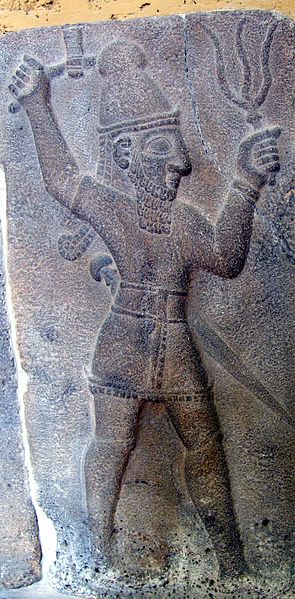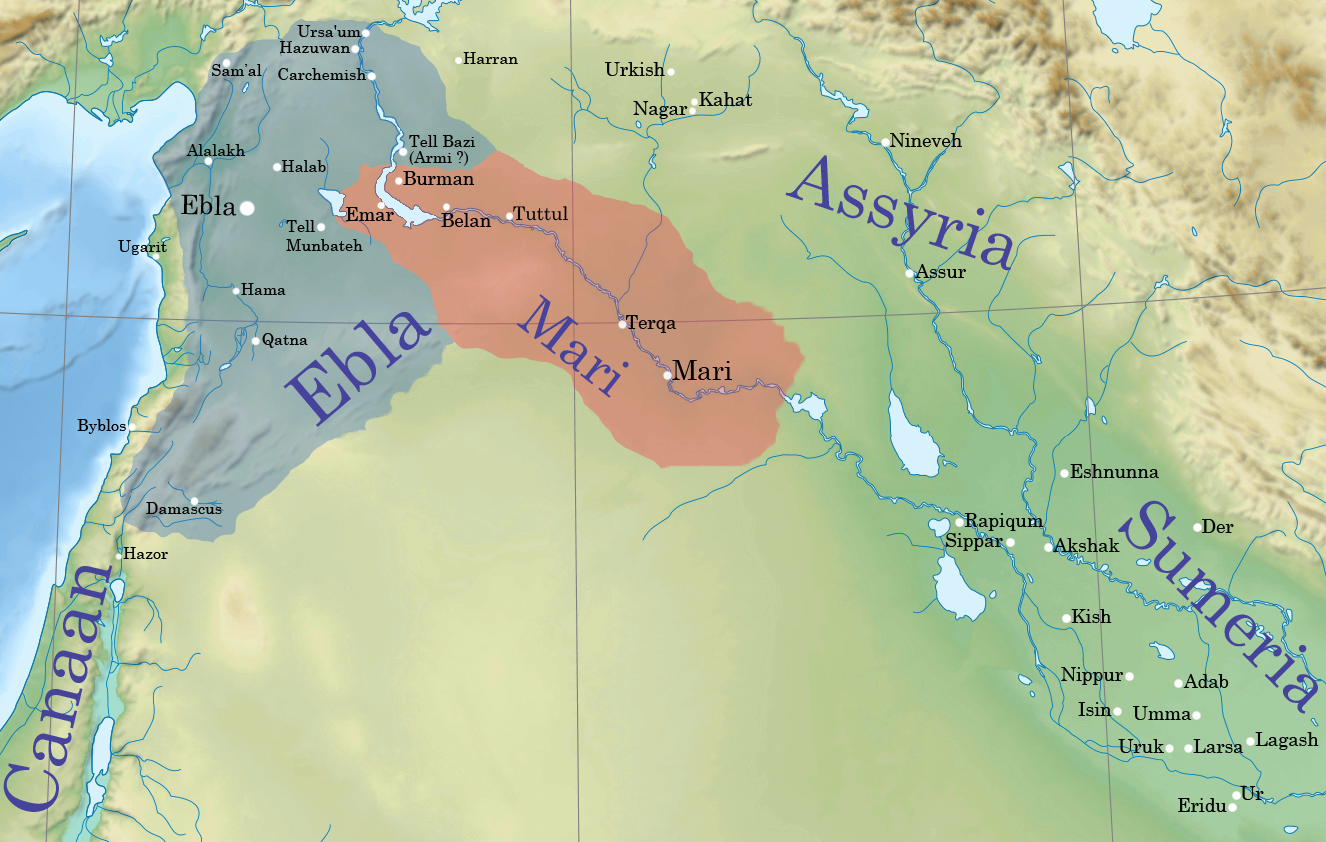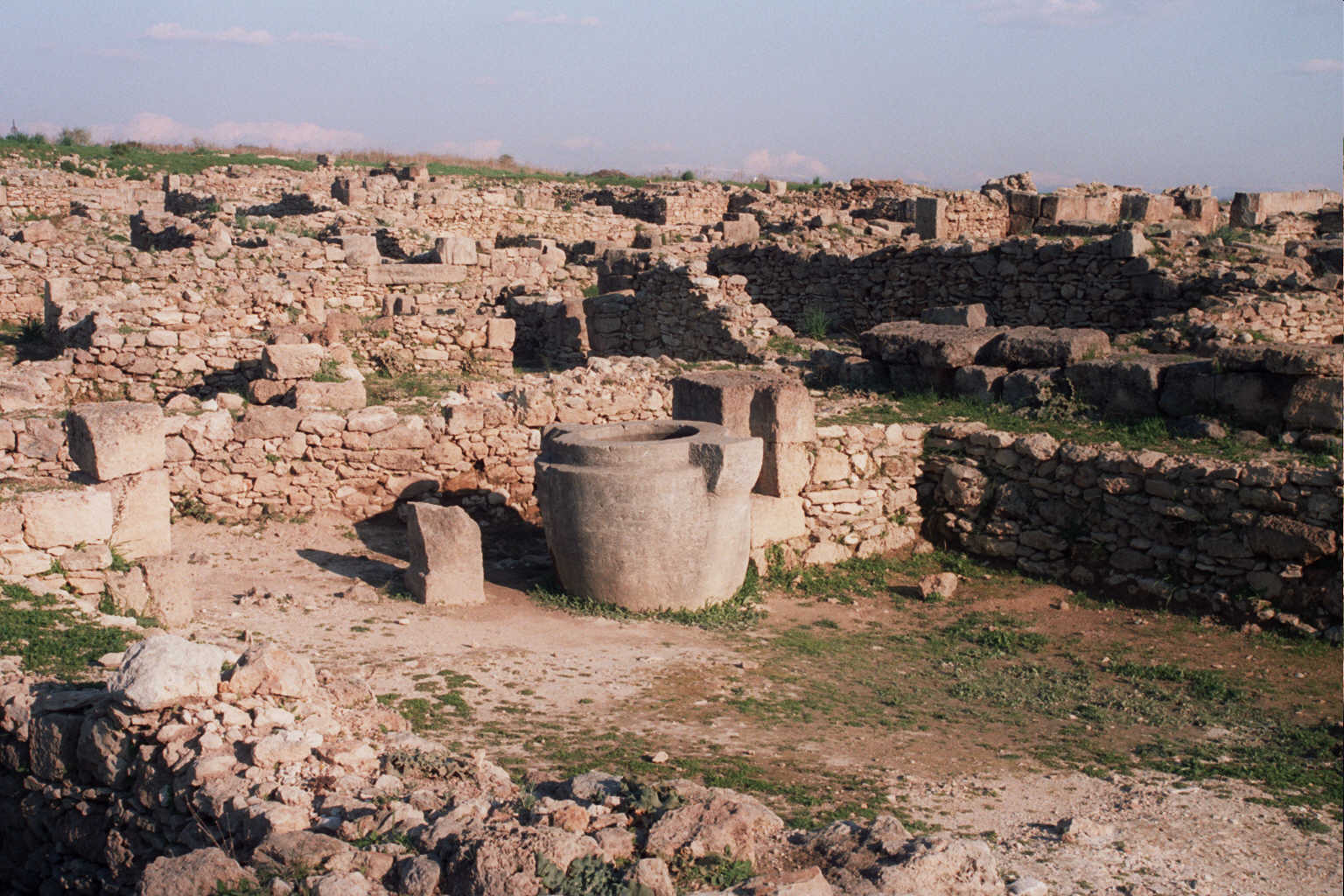|
Iršappa
Resheph (also Reshef and many other variants, see below; Eblaite , ''Rašap'', , ''ršp'', Egyptian ', , ''ršp'', ''Rešep̄'') was a god associated with war and plague, originally worshiped in Ebla in the third millennium BCE. He was one of the main members of the local pantheon, and was worshiped in numerous hypostases, some of which were associated with other nearby settlements, such as Tunip. He was associated with the goddess Adamma, who was his spouse in Eblaite tradition. Eblaites considered him and the Mesopotamian god Nergal to be equivalents, most likely based on their shared role as war deities. In the second millennium BCE, Resheph continued to be worshiped in various cities in Syria and beyond. He is best attested in texts from Ugarit, where he was one of the most popular deities. While well attested in ritual texts and theophoric names, he does not play a large role in Ugaritic mythology. An omen text describes him as the doorkeeper of the sun goddess, Shapash ... [...More Info...] [...Related Items...] OR: [Wikipedia] [Google] [Baidu] |
Ugaritic Mythology
The Ugaritic pantheon included deities of local origin, many of whom are also known from Ebla#Religion, Eblaite sources from the third millennium BCE or Amorites, Amorite ones from the early second millennium BCE, as well as List of Hurrian deities, Hurrian and List of Mesopotamian deities, Mesopotamian ones. The Ugaritic pantheon is considered better documented than other aspects of Ugaritic religion, such as the life of the clergy or the social context of various offerings. Over two hundred names of deities are known from Ugaritic texts, though it has been argued the number of these who were an object of active worship was lower. Many of the names are binomial, and as such may refer either to a single deity and their epithet, to two deities syncretized into one, or to a closely associated pair. The presence of Hurrian deities in the pantheon is considered one of the main differences between the Ugaritic religion, religion of the inhabitants of Ugarit and those known from other ar ... [...More Info...] [...Related Items...] OR: [Wikipedia] [Google] [Baidu] |
Hurrian Pantheon
The Hurrian pantheon consisted of gods of varied backgrounds, some of them natively Hurrian, while others adopted from other pantheons, for example Eblaite and Mesopotamian. Like the other inhabitants of the Ancient Near East, Hurrians regarded their gods as anthropomorphic. They were usually represented in the form of statues holding the symbols associated with a specific deity. The Yazılıkaya sanctuary, which was Hittite in origin but served as a center of the practice of Hurrian religion, is considered a valuable source of information about their iconography. Hurrians organized their gods into lists known as ''kaluti'' or into similar lexical lists as the Mesopotamians. The formal structure of the pantheon was most likely based on either Mesopotamian or Syrian theology. The status of individual deities and composition of the pantheon could vary between individual locations, but some can nonetheless be identified as "pan-Hurrian." The following list does not include deitie ... [...More Info...] [...Related Items...] OR: [Wikipedia] [Google] [Baidu] |
Ebla
Ebla (Sumerian language, Sumerian: ''eb₂-la'', , modern: , Tell Mardikh) was one of the earliest kingdoms in Syria. Its remains constitute a Tell (archaeology), tell located about southwest of Aleppo near the village of Mardikh. Ebla was an important center throughout the and in the first half of the Its discovery proved the Levant was a center of ancient, centralized civilization equal to Ancient Egypt, Egypt and Mesopotamia and ruled out the view that the latter two were the only important centers in the Ancient Near East, Near East during the Early Bronze Age. The first Eblaite kingdom has been described as the first recorded world power. Starting as a small settlement in the Early Bronze Age ( ), Ebla developed into a trading empire and later into an expansionist power that imposed its hegemony over much of northern and eastern Syria. Ebla was destroyed during the It was then rebuilt and was mentioned in the records of the Third Dynasty of Ur. The second Ebla w ... [...More Info...] [...Related Items...] OR: [Wikipedia] [Google] [Baidu] |
Hypostasis (philosophy And Religion)
Hypostasis (plural: hypostases), from the Greek (''hypóstasis''), is the underlying, fundamental state or substance that supports all of reality. It is not the same as the concept of a substance. In Neoplatonism, the hypostasis of the soul, the intellect (''nous'') and " the one" was addressed by Plotinus. In Christian theology, the Holy Trinity consists of three hypostases: that of the Father, that of the Son, and that of the Holy Spirit. Ancient Greek philosophy Pseudo-Aristotle used "hypostasis" in the sense of material substance. Neoplatonists argue that beneath the surface phenomena that present themselves to our senses are three higher spiritual principles (or ''hypostases''): each one more sublime than the preceding. For Plotinus, these are the Soul, the Intellect, and the One.''Neoplatonism (Ancient Philosophies)'' by Pauliina Remes (2008), University of California Press , pp. 48–52. Christian theology The term ''hypostasis'' has particular significance in Chr ... [...More Info...] [...Related Items...] OR: [Wikipedia] [Google] [Baidu] |
Phoenician Religion
Canaanite religion or Syro-Canaanite religions refers to the myths, cults and ritual practices of people in the Levant during roughly the first three millennia BC. Canaanite religions were polytheistic and in some cases monolatristic. They were influenced by neighboring cultures, particularly ancient Egyptian and Mesopotamian religious practices. The pantheon was headed by the god El and his consort Asherah, with other significant deities including Baal, Anat, Astarte, and Dagon. Canaanite religious practices included animal sacrifice, veneration of the dead, and the worship of deities through shrines and sacred groves. The religion also featured a complex mythology, including stories of divine battles and cycles of death and rebirth. Archaeological evidence, particularly from sites like Ugarit, and literary sources, including the Ugaritic texts and the Hebrew Bible, have provided most of the current knowledge about Canaanite religion. Sources and history Knowledge abo ... [...More Info...] [...Related Items...] OR: [Wikipedia] [Google] [Baidu] |
Ramesside Period
The New Kingdom, also called the Egyptian Empire, refers to ancient Egypt between the 16th century BC and the 11th century BC. This period of ancient Egyptian history covers the Eighteenth, Nineteenth, and Twentieth dynasties. Through radiocarbon dating, the establishment of the New Kingdom has been placed between 1570 and 1544 BC. The New Kingdom followed the Second Intermediate Period and was succeeded by the Third Intermediate Period. It was the most prosperous time for the Egyptian people and marked the peak of Egypt's power. In 1845, the concept of a "New Kingdom" as one of three "golden ages" was coined by German scholar Christian Charles Josias von Bunsen; the original definition would evolve significantly throughout the 19th and 20th centuries. The later part of this period, under the Nineteenth Dynasty (1295–1189 BC) and the Twentieth Dynasty (1189–1069 BC), is also known as the ''Ramesside period''. It is named after the eleven pharaohs who took th ... [...More Info...] [...Related Items...] OR: [Wikipedia] [Google] [Baidu] |
Hyksos
The Hyksos (; Egyptian language, Egyptian ''wikt:ḥqꜣ, ḥqꜣ(w)-wikt:ḫꜣst, ḫꜣswt'', Egyptological pronunciation: ''heqau khasut'', "ruler(s) of foreign lands"), in modern Egyptology, are the kings of the Fifteenth Dynasty of Egypt (fl. c. 1650–1550 BC). Their seat of power was the city of Avaris in the Nile Delta, from where they ruled over Lower Egypt and Middle Egypt up to Cusae. In the ''Aegyptiaca'', a history of Egypt written by the Greco-Egyptian priest and historian Manetho in the 3rd century BC, the term Hyksos is used ethnically to designate people of probable West Semitic, Levantine origin. While Manetho portrayed the Hyksos as invaders and oppressors, this interpretation is questioned in modern Egyptology. Instead, Hyksos rule might have been preceded by groups of Canaanite peoples who gradually settled in the Nile Delta from the end of the Twelfth Dynasty of Egypt, Twelfth Dynasty onwards and who may have seceded from the crumbling and unstable Egyptia ... [...More Info...] [...Related Items...] OR: [Wikipedia] [Google] [Baidu] |
Ancient Egypt
Ancient Egypt () was a cradle of civilization concentrated along the lower reaches of the Nile River in Northeast Africa. It emerged from prehistoric Egypt around 3150BC (according to conventional Egyptian chronology), when Upper and Lower Egypt were amalgamated by Menes, who is believed by the majority of List of Egyptologists, Egyptologists to have been the same person as Narmer. The history of ancient Egypt unfolded as a series of stable kingdoms interspersed by the "Periodization of ancient Egypt, Intermediate Periods" of relative instability. These stable kingdoms existed in one of three periods: the Old Kingdom of Egypt, Old Kingdom of the Early Bronze Age; the Middle Kingdom of Egypt, Middle Kingdom of the Middle Bronze Age; or the New Kingdom of Egypt, New Kingdom of the Late Bronze Age. The pinnacle of ancient Egyptian power was achieved during the New Kingdom, which extended its rule to much of Nubia and a considerable portion of the Levant. After this period, Egypt ... [...More Info...] [...Related Items...] OR: [Wikipedia] [Google] [Baidu] |
Hittite Empire
The Hittites () were an Anatolian peoples, Anatolian Proto-Indo-Europeans, Indo-European people who formed one of the first major civilizations of the Bronze Age in West Asia. Possibly originating from beyond the Black Sea, they settled in modern-day Turkey in the early 2nd millennium BC. The Hittites formed a series of Polity, polities in north-central Anatolia, including the kingdom of Kussara (before 1750 BC), the Kültepe, Kanesh or Nesha Kingdom (–1650 BC), and an empire centered on their capital, Hattusa (around 1650 BC). Known in modern times as the Hittite Empire, it reached its peak during the mid-14th century BC under Šuppiluliuma I, when it encompassed most of Anatolia and parts of the northern Levant and Upper Mesopotamia, bordering the rival empires of the Hurri-Mitanni and Assyrians. Between the 15th and 13th centuries BC, the Hittites were one of the dominant powers of the Near East, coming into conflict with the New Kingdom of Egypt, the Middle Assyrian Empi ... [...More Info...] [...Related Items...] OR: [Wikipedia] [Google] [Baidu] |







